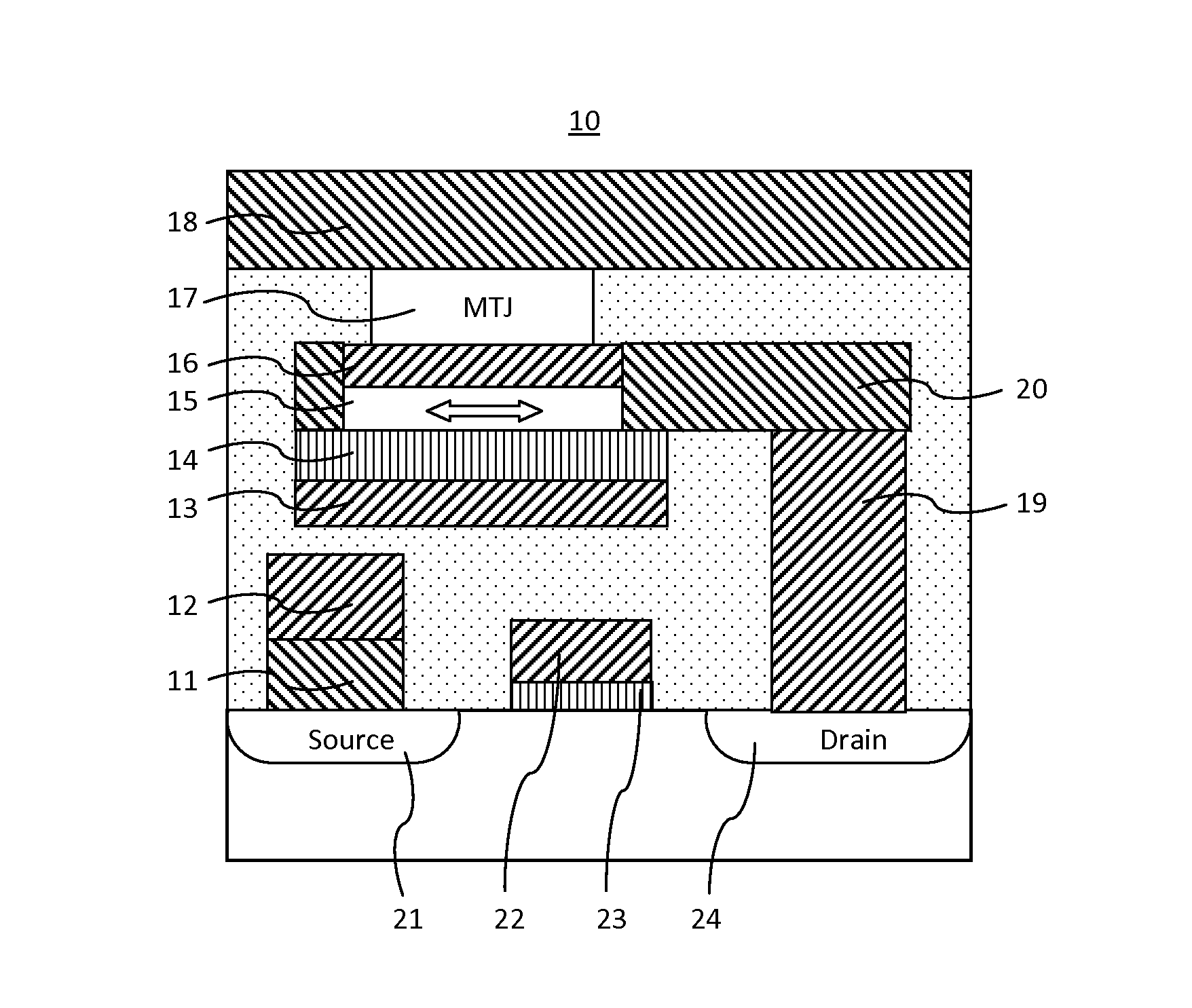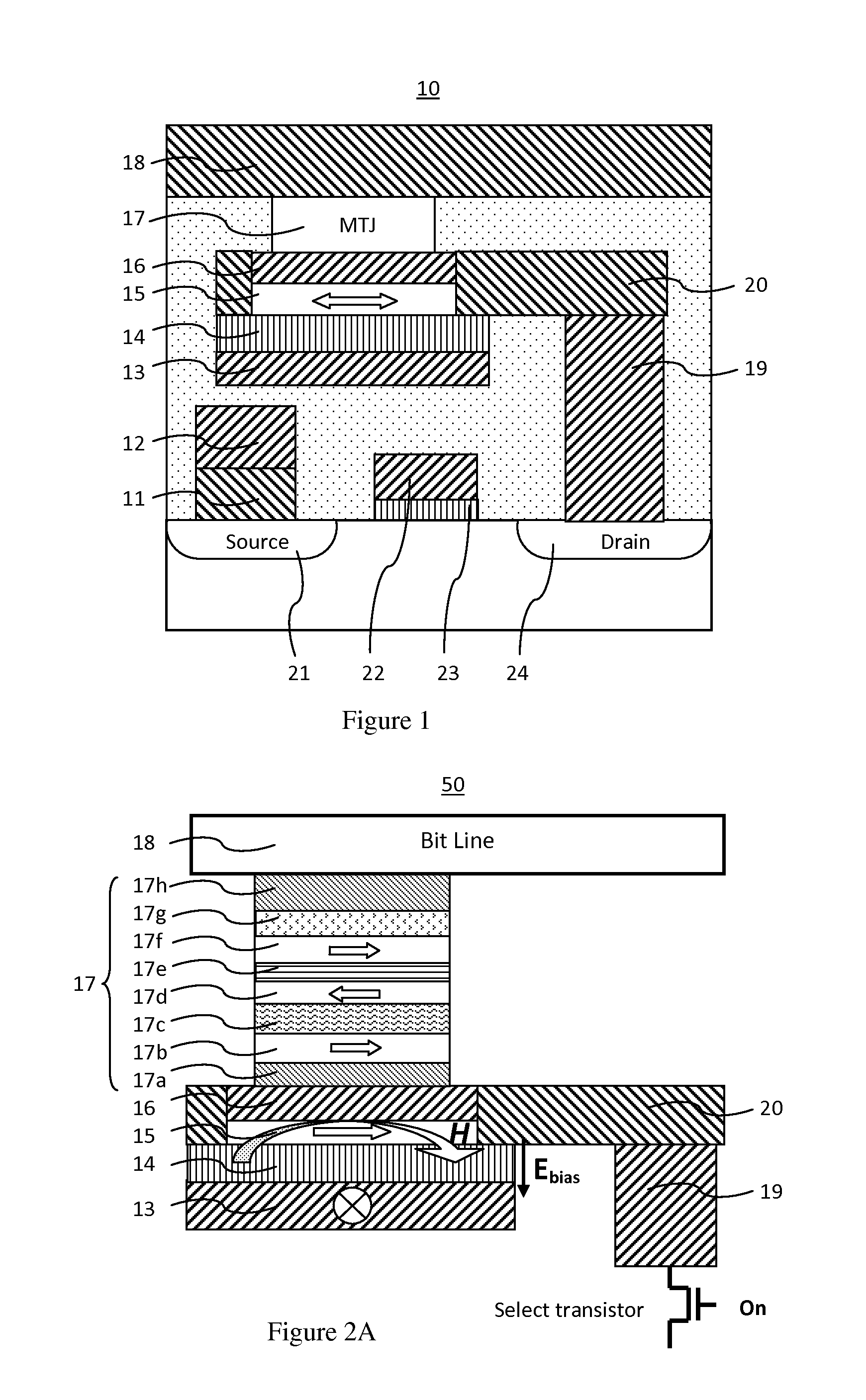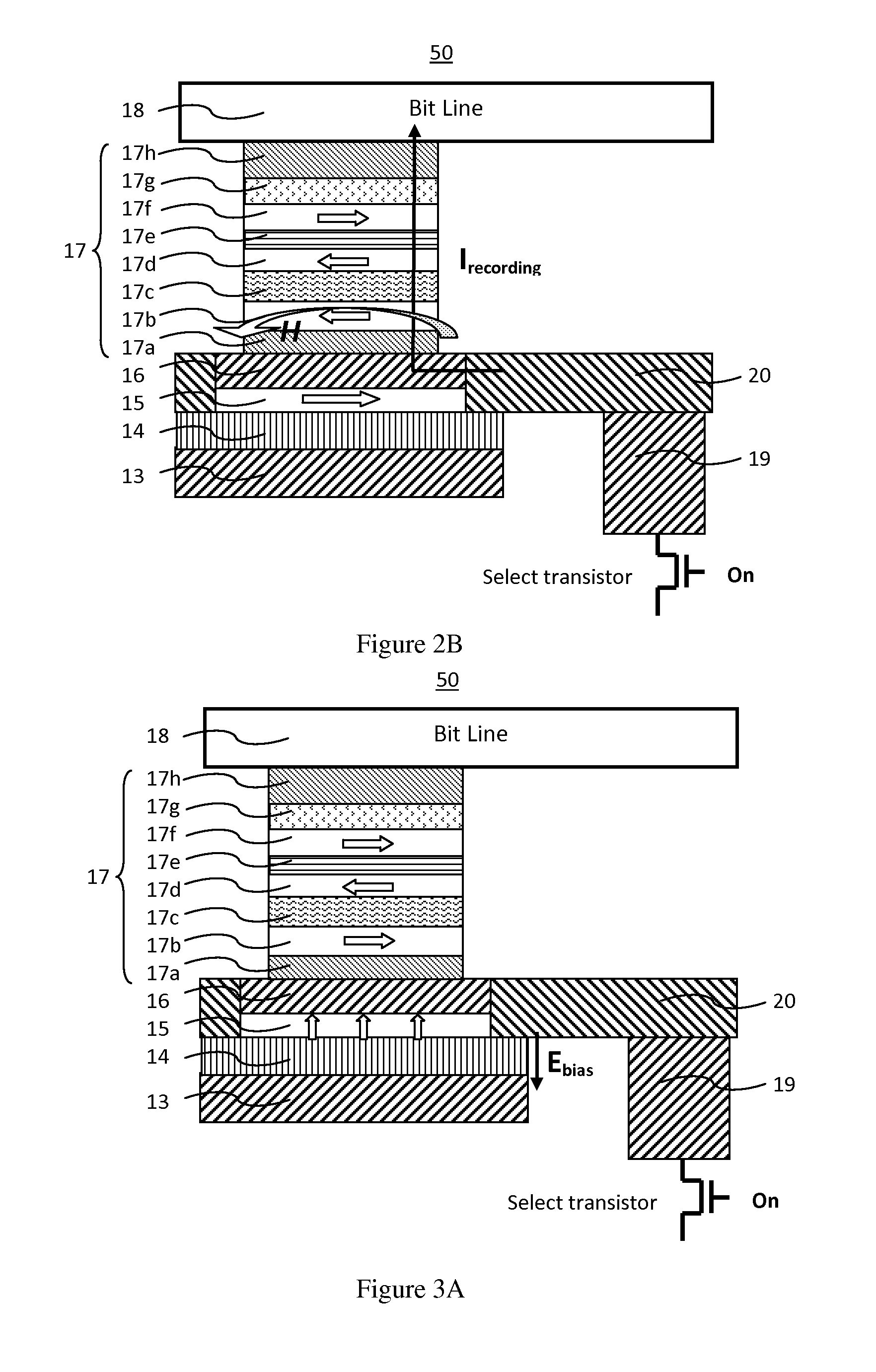Magnetoresistive element and method of manufacturing the same
a magnetic random access and element technology, applied in the field of spintransfertorque magnetic random access memory element (mram), can solve the problems of element unrecordable, information readout error increase, value change, etc., and achieve the effect of enhancing perpendicular anisotropy strength, low write current, and increasing perpendicular anisotropy strength
- Summary
- Abstract
- Description
- Claims
- Application Information
AI Technical Summary
Benefits of technology
Problems solved by technology
Method used
Image
Examples
first embodiment
[0059]FIG. 2(A, B) illustrate a magnetoresistive element 50 in the method of operating a spin-transfer-torque magnetoresistive memory. A circuitry, which is not shown here, is coupled to the bit line for providing a bi-directional recording current between the bit line and the middle electrode connecting to the select transistor, and is coupled to the digital line for providing an electric field on the dielectric functional between the digital line and the middle electrode. The magnetoresistive element 50 comprises: a bit line 18, an MTJ stack 17, a conductive layer 16, a soft adjacent layer 15, a dielectric functional layer 14, a digital line 13, a drain contact 19, a middle electrode 20. The MTJ stack comprises: a seed layer 17a, a recording layer 17b, a tunnel barrier layer 17c, a reference layer 17d, a coupling spacing layer 17e, a pinned layer 17f, an anti-ferromagnetic layer 17g and a cap layer 17h, in the order from the bottom.
[0060]The recording layer 17b and reference layer...
second embodiment
[0067]FIGS. 3(A-C) illustrate a magnetoresistive element 50 in the method of operating a spin-transfer-torque magnetoresistive memory. Applying a negative voltage on the digital line generates a large electric field pointing into the top surface of the functional layer and increases the perpendicular anisotropy strength in the soft adjacent layer to make the magnetization of the soft adjacent layer along a perpendicular direction, as shown in FIG. 3A.
[0068]FIG. 3B illustrates a magnetoresistive element 50 having a spin transfer recording current between the bit line and the select transistor and into the stacked body along the stack direction while the voltage from a digital line is maintained to keep the soft adjacent layer magnetization in a perpendicular direction, breaking the flux closure between magnetizations in the soft adjacent layer and the recording layer. Thus a low write current is readily achieved to reverse the recording layer magnetization. After a successful data re...
PUM
 Login to View More
Login to View More Abstract
Description
Claims
Application Information
 Login to View More
Login to View More - R&D
- Intellectual Property
- Life Sciences
- Materials
- Tech Scout
- Unparalleled Data Quality
- Higher Quality Content
- 60% Fewer Hallucinations
Browse by: Latest US Patents, China's latest patents, Technical Efficacy Thesaurus, Application Domain, Technology Topic, Popular Technical Reports.
© 2025 PatSnap. All rights reserved.Legal|Privacy policy|Modern Slavery Act Transparency Statement|Sitemap|About US| Contact US: help@patsnap.com



